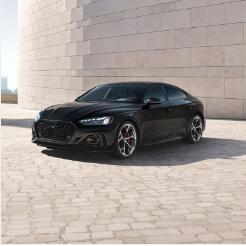Types of Passenger Vehicles
2025-01-10
Passenger vehicles are a cornerstone of modern transportation, offering convenience, mobility, and comfort to millions of people worldwide. They come in various shapes, sizes, and designs, catering to diverse needs and preferences. Here's an overview of passenger vehicles:
Types of Passenger Vehicles
1. Sedans
- Features: Four doors, a separate trunk, and seating for 4-5 passengers.
- Examples: Toyota Camry, Honda Accord.
- Ideal for: Daily commuting and small families.
2. Hatchbacks
- Features: A rear door that swings upward, combining cargo and passenger space.
- Examples: Volkswagen Golf, Ford Focus.
- Ideal for: City driving and compact parking spaces.
3. SUVs (Sport Utility Vehicles)
- Features: High ground clearance, robust build, and spacious interiors.
- Examples: Toyota RAV4, Ford Explorer.
- Ideal for: Off-road adventures and larger families.
4. Crossover SUVs
- Features: Combines features of SUVs and hatchbacks.
- Examples: Honda CR-V, Subaru Outback.
- Ideal for: Urban driving with occasional off-road trips.
5. Minivans
- Features: Sliding doors, flexible seating for 7-8 passengers, and ample cargo space.
- Examples: Honda Odyssey, Chrysler Pacifica.
- Ideal for: Families and group travel.
6. Coupes and Convertibles
- Features: Sleek two-door design; convertibles have retractable roofs.
- Examples: BMW 4 Series (Coupe), Mazda MX-5 Miata (Convertible).
- Ideal for: Style-conscious buyers and solo or duo travel.
7. Electric Vehicles (EVs)
- Features: Powered entirely by electricity, offering eco-friendly transportation.
- Examples: Tesla Model 3, Nissan Leaf.
- Ideal for: Environmentally conscious drivers.
8. Hybrids and Plug-in Hybrids
- Features: Combines internal combustion engines with electric motors.
- Examples: Toyota Prius, Hyundai Ioniq.
- Ideal for: Fuel efficiency with lower emissions.

Key Features to Consider
1. Fuel Efficiency
- Gasoline, diesel, hybrid, and electric options impact running costs.
2. Safety Features
- Advanced driver-assistance systems (ADAS), airbags, and crash-test ratings.
3. Technology and Connectivity
- Touchscreen infotainment, smartphone integration, and navigation.
4. Space and Comfort
- Legroom, headroom, and storage options tailored to family or individual needs.
5. Performance
- Engine power, handling, and drive type (FWD, RWD, AWD).
Emerging Trends in Passenger Vehicles
1. Electric Revolution
- Governments and manufacturers are focusing on transitioning to EVs.
2. Autonomous Driving
- Development of self-driving technologies is reshaping the industry.
3. Sustainability
- Use of recycled materials, eco-friendly manufacturing, and low-emission vehicles.
4. Customization
- Enhanced user personalization for interiors, infotainment, and exterior designs.


